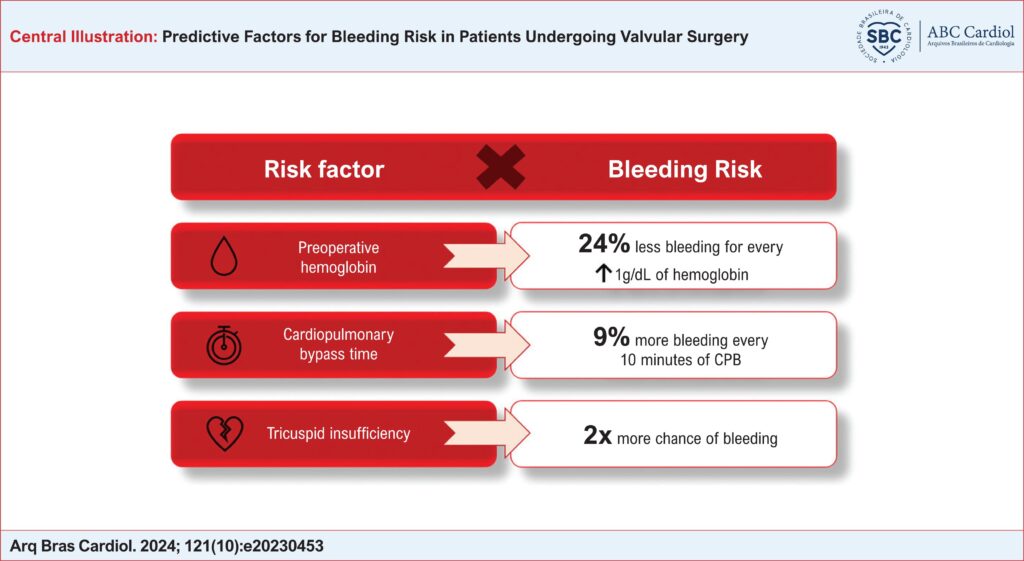Arq. Bras. Cardiol. 2024; 121(10): e20230453
Predictive Factors for Bleeding Risk in Patients Undergoing Valvular Surgery
Abstract
Background:
The postoperative period of heart valve surgery is challenging due to the risk of bleeding, leading to complications and increased morbidity and mortality.
Objective:
To develop a risk score to predict bleeding in patients after valve surgery.
Methods:
Retrospective study of patients operated on between 2021 and 2022. Patients with major bleeding were selected based on the BARC and Bojar criteria. A logistic regression analysis was performed for factors related to bleeding and a nomogram of scores was created. For statistical significance, p<0.05 and a 95% confidence interval were considered. The study was approved by the CEP.
Results:
525 patients were analyzed, with a mean age of 56 years and a predominance of females. The most common valve disease was mitral insufficiency, 8.8% had increased bleeding and 4.3% had surgical reoperations. The variables with statistical significance were tricuspid insufficiency (OR 3.31, p < 0.001), chronic kidney disease/acute kidney injury (OR 2.97, p = 0.006), preoperative hemoglobin (OR 0.73, p < 0.001), reoperations (OR 2, 5, p = 0.003), cardiopulmonary bypass (CPB) time (OR 1.12, p < 0.001), 2-valve approach OR of 2.23 (p = 0.013), use of packed red blood cells OR of 2.8 (p = 0.001). In the multiple model, tricuspid insufficiency, CPB time and preoperative hemoglobin reached statistical significance.
Conclusion:
CPB time, preoperative hemoglobin and tricuspid insufficiency were independently associated with postoperative bleeding. The proposed scale is plausible and can help predict the risk of bleeding.
1,002

